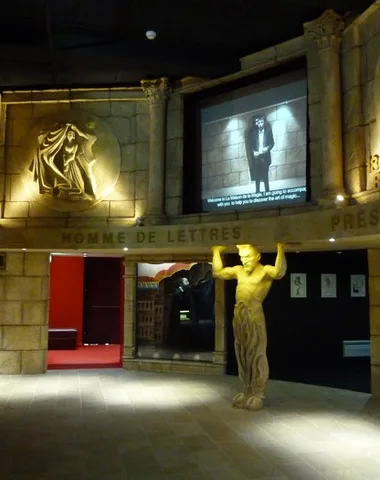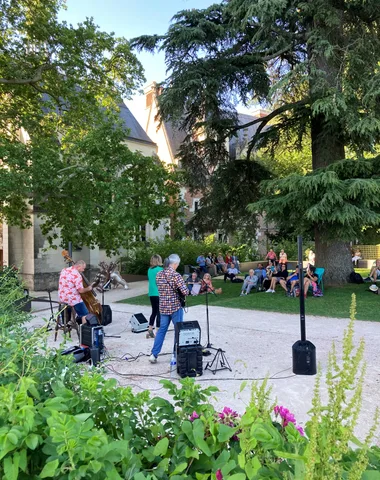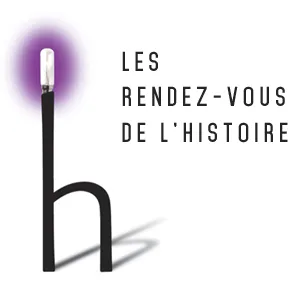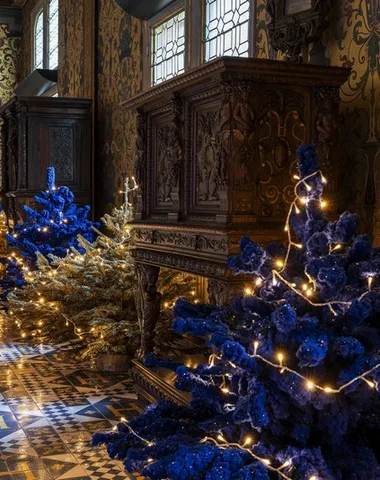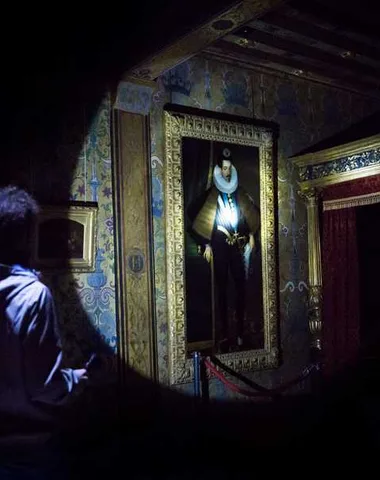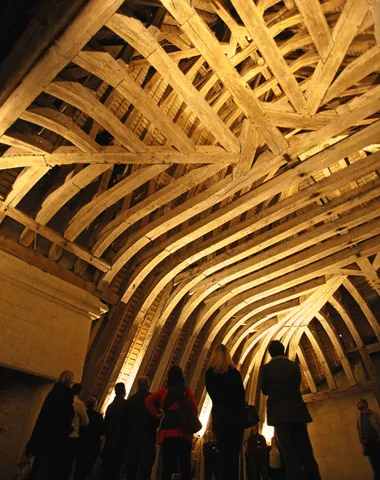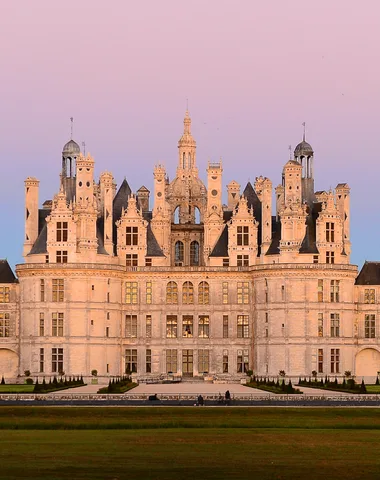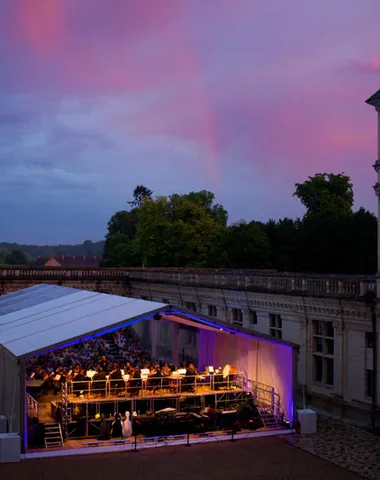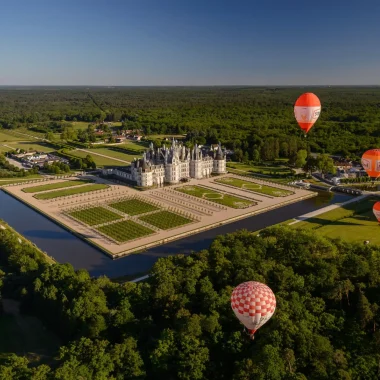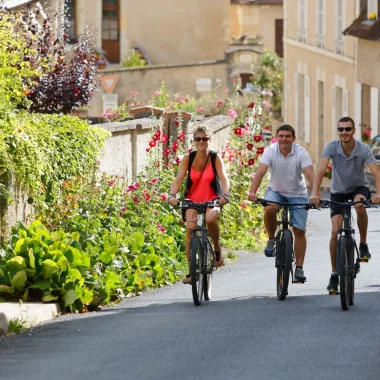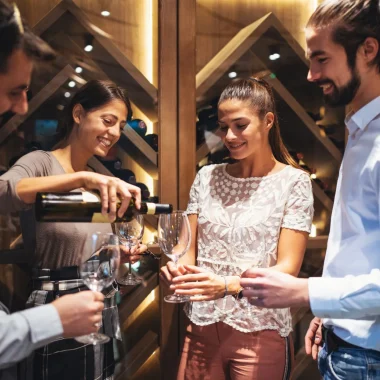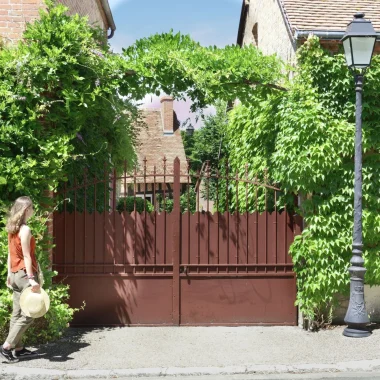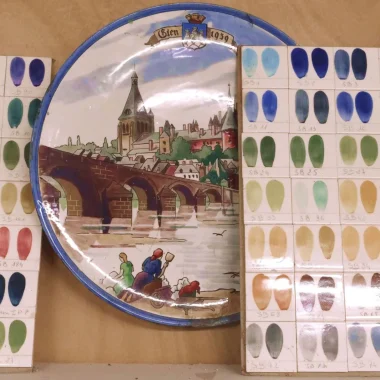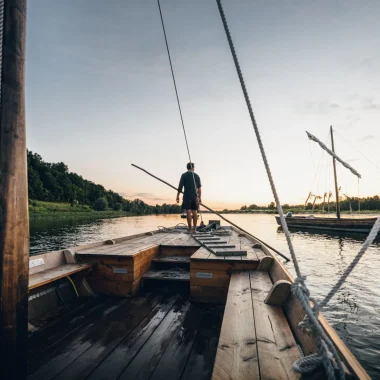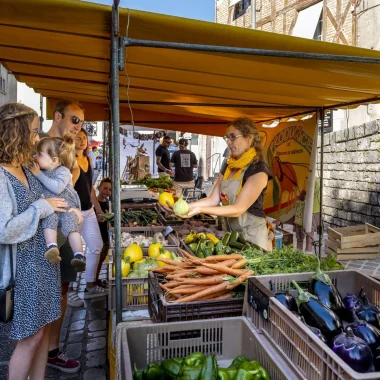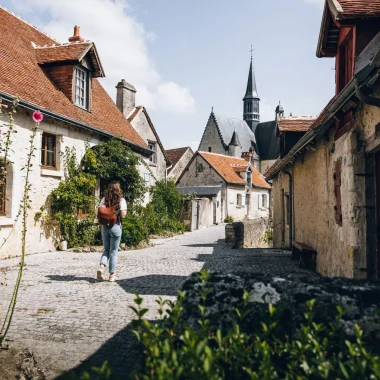Here are 6 Loire châteaux to visit near Blois. Between the Loire and Sologne, each of these châteaux, big or small, tells its own story, often closely linked to the History of France!
The Royal Château of Blois
If you’re ready to visit the Loire châteaux near Blois, you might as well start with the one in… Blois, of course! Located right in the city centre, it offers panoramic views over the Loire and the Chambord forest.
Having hosted 7 kings and 10 queens of France, the Royal Château of Blois is the royal château par excellence! Anne of Brittany, Louis XII, Catherine de’ Medici, Francis I, Henri II… Each of these illustrious figures has left their mark here! You may come across a porcupine, a salamander, an ermine… a visit to the Royal Château of Blois is a real treasure hunt!
So let’s go! Once you’ve gone through the entranceway, stand in the centre of the royal courtyard, turn around slowly and take the time to observe each building… Voilà! You have just travelled through five centuries of history: the Middle Ages on the left, the 15th century with the Gothic wing behind you, the Renaissance on your right with the splendid grand staircase and the 17th century with the classical wing opposite you. Impressive, isn’t it?
Ah, if only Francis I could have known that five centuries later, people would be visiting his château with a digital tablet, and that it would be so easy to become immersed in his daily life! 15 rooms in the Royal Château of Blois have been reconstructed in 3D, giving visitors the chance to manipulate historical objects in 360° virtual reality on their Histopads, and relive the high points of history. A total immersion!
Discover all the events at the Royal Château of Blois
Visite guidée “Sous les jupons des reines” au Château Royal de Blois
Fantastic show in château Royal of Blois – Sound and Light show
Exposition, le coeur d’une reine : les funérailles d’Anne de Bretagne – Copie
The Château of Chambord
The best way to grasp the sheer size of this château is to arrive by bike. You’ll cycle through an immense forest, where you might come across a roe deer, a doe, a stag or a wild boar. And suddenly, it will emerge from the forest and stand before you in all its splendour: the Château of Chambord, one of the essential Loire châteaux to visit near Blois!
It was born of the whim of a king with a passion for hunting, who dreamt of a large estate where he could indulge in fine hunting parties and impress his enemies. Francis I wanted the château here, in this immense forest the size of Paris itself, and on marshland. Although the King only spent a fortnight here in all, the Château of Chambord is both an enormous project and an architectural feat, with 426 rooms, 365 windows, 282 fireplaces and a 32-kilometre-long wall surrounding the 5,440-hectare park. And we can’t forget its famous double helix staircase. The story goes that a certain Leonardo da Vinci designed it. Whether this is true or not, we don’t know!
Need a breath of fresh air? Hire a bike and explore the superb national forest surrounding the Château of Chambord, all routes are signposted and… flat! If sport isn’t your cup of tea, opt instead for a safari in an all-terrain vehicle, accompanied by a nature guide who will share their invaluable knowledge of how the park’s flora and fauna are managed.
And if your heart is set on gardens, take the time to discover the French-style gardens recreated at the foot of the château, or the permaculture vegetable garden. If you book in advance, you can even leave with a basket of vegetables! Just the thing to make a royal soup!
Discover all the events at the Château of Chambord
Exposition « Dehors Dedans » de Julien des Monstiers au Château de Chambord
The Château of Cheverny
There is no trace of the Kings of France in this Loire château near Blois. The sumptuously decorated King’s bedroom never hosted a King. No, the illustrious characters in this château are actually comic strip characters. Tintin, Snowy, Captain Haddock, Thomson and Thompson, Professor Calculus… Yes! The Château of Cheverny inspired the cartoonist Hergé to create Marlinspike Hall.
Remember the famous broken step at Marlinspike Hall, which Captain Haddock always trips over? When you visit the Château of Cheverny, take a good look to see if it really exists!
Marlinspike Hall is a beautiful property that has belonged to the Marquis de Vibraye family for over 600 years. The tour takes you through the different rooms – furnished and heated – of the château, which house a fine collection of unique furniture and objects. You can even see the dress worn by the Marquise at her wedding in 1994!
The estate is very large, and beyond the Château of Cheverny itself, the grounds are a must! Lose yourself in the maze, have fun identifying the vegetables and herbs in the kitchen garden, marvel at the tulip beds in spring, wander among the hundred-year-old sequoias and cedars, and then board a small electric boat for a romantic ride on the water! To finish the tour, treat yourself to a moment of indulgence at the Orangerie, where ice creams, sorbets and pastries await!
Discover all the events at the Château of Cheverny
The Château of Villesavin
Between Chambord and Cheverny, here’s the “site hut for the construction of Chambord”! It’s easy to drive past it without stopping, which is a big mistake, because the Château of Villesavin is another essential Loire château to visit near Blois.
The Château of Villesavin was built in the 16th century for Jean Le Breton, governor of the construction of the Château of Chambord for Francis I, to enable him to follow the progress at Chambord. It has now belonged to the De Sparre family for three generations.
During your visit, pay particular attention to the dovecote, a powerful reminder of the site’s history, the 16th-century Carrara marble basin in the middle of the main courtyard, and the murals in the chapel, restored in 2015. The tour then takes you to the wedding museum, with its impressive collection of wedding globes and crowns – over 350 models on display – as well as suits and wedding dresses from different eras.
If your children aren’t too keen on the wedding theme, take them to the grounds and stables! The children’s farm awaits them, and they will be given a bag of bread to feed the animals. Donkeys, sheep, cows, goats, rabbits… a real small-scale agriculture show, right in the heart of nature!
Head to the stables to discover the collection of horse-drawn carriages, 19th-century carriages also known as “calèches”, and the fascinating collection of children’s carriages pulled by goats, sheep or even dogs! Your little ones are bound to get excited!
And if they still have the energy, the owners have also planned a treasure hunt and a game in search of the ghost of Villesavin!
The Château of Talcy
If you’re a fan of romance, this is the place for you! The Château of Talcy is a real jewel in a magnificently verdant setting and an essential Loire château to visit near Blois.
If I say to you: “Mignonne, allons voir si la rose…”, and you answer: “Ronsard”, you’re right. What you may not know is that the poet wrote his prose for Cassandre, the “Mignonne” who is none other than the daughter of the owner of the Château of Talcy, whom he met at a ball held in 1545 at the Château of Blois. Such was the seductive power of the women in the family that Cassandre’s niece, Diane, inspired another well-known French poet, Agrippa d’Aubigné.
The words of these poets still resonate today at the Château of Talcy, and the roses adorning the columned well in the courtyard are a wonderful echo of Ronsard’s poem.
The Château of Talcy also features a garden listed as a Remarkable Garden. It is a nourishing garden, with a collection of beautifully arranged fruit trees. The heirloom varieties of apples and pears are espaliered, which gives them tremendous charm. The orchard has been classified as a conservatory of heirloom fruit, and the gardeners grow old varieties: plums, medlars, blackcurrants, redcurrants, grapevines, cherries, walnuts, etc.
This year, take a stroll around, marvel at the beauty, recharge your batteries, all the while reciting Ronsard’s verses, of course!
The Château of Beauregard
“Trait pour trait, à partir d’un portrait…” If you know Calogero’s song, you’re bound to get it stuck in your head at this Loire château to visit near Blois. The Château of Beauregard is famous for its portrait gallery!
The famous Portrait Gallery at the Château of Beauregard is home to no fewer than 327 portraits, collected by three generations of owners in the 17th century. It is also the most complete and exhaustive collection to date. This gallery is a veritable history textbook, tracing the history of France and illustrating the construction of Europe. It also shows how the art of portraiture has evolved over the centuries, in terms of costumes, attributes and representations.
There are portraits everywhere, even in the 40-hectare garden surrounding the château! The Garden of Portraits was designed by landscape architect Gilles Clément, who is also responsible for the Parc André Citroën and the Quai Branly garden. Twelve tree tunnel “rooms” in twelve different colours implicitly recount history, recalling the panels of the reigns evoked in the Portrait Gallery.
And to continue on the same theme, since 2012 the château has hosted the International Festival of Animal Portraits!
Themes




